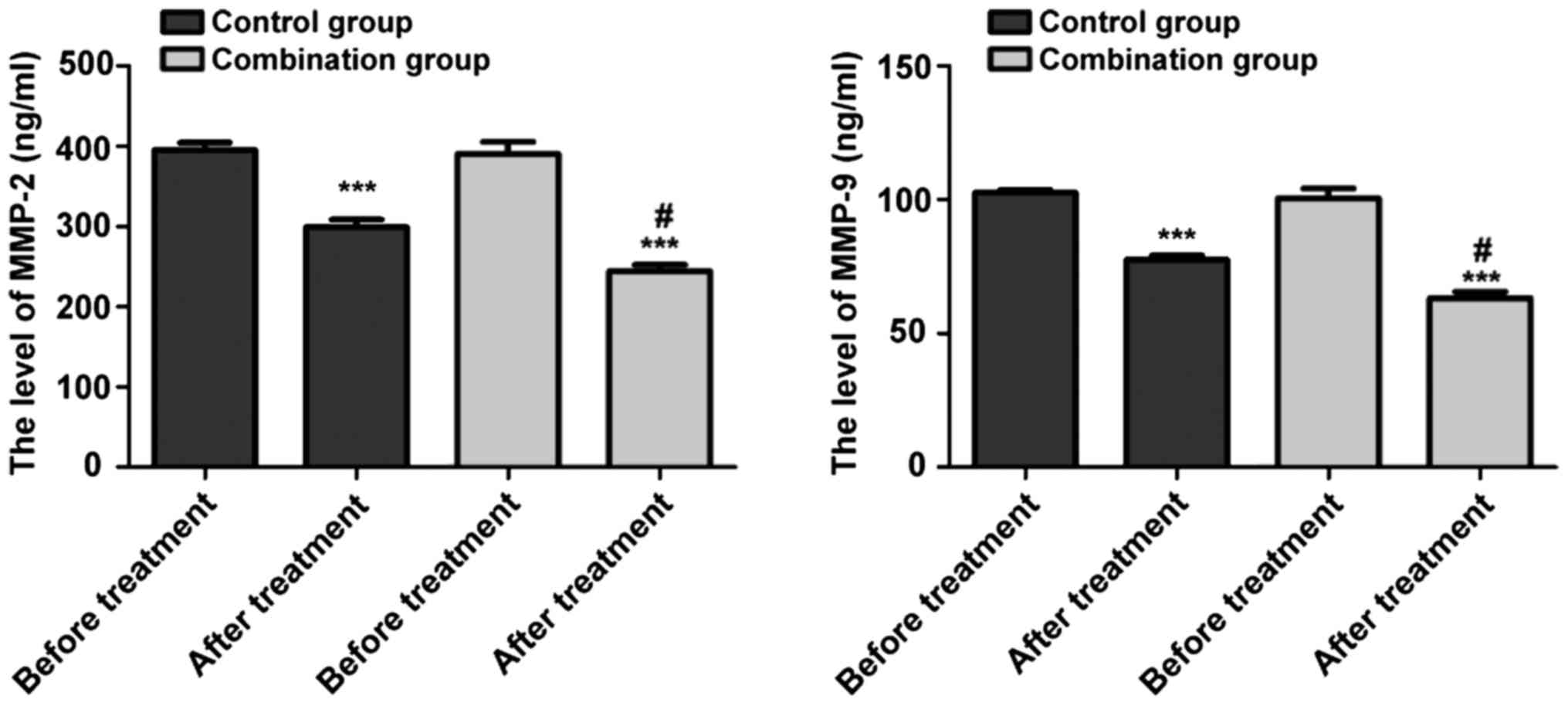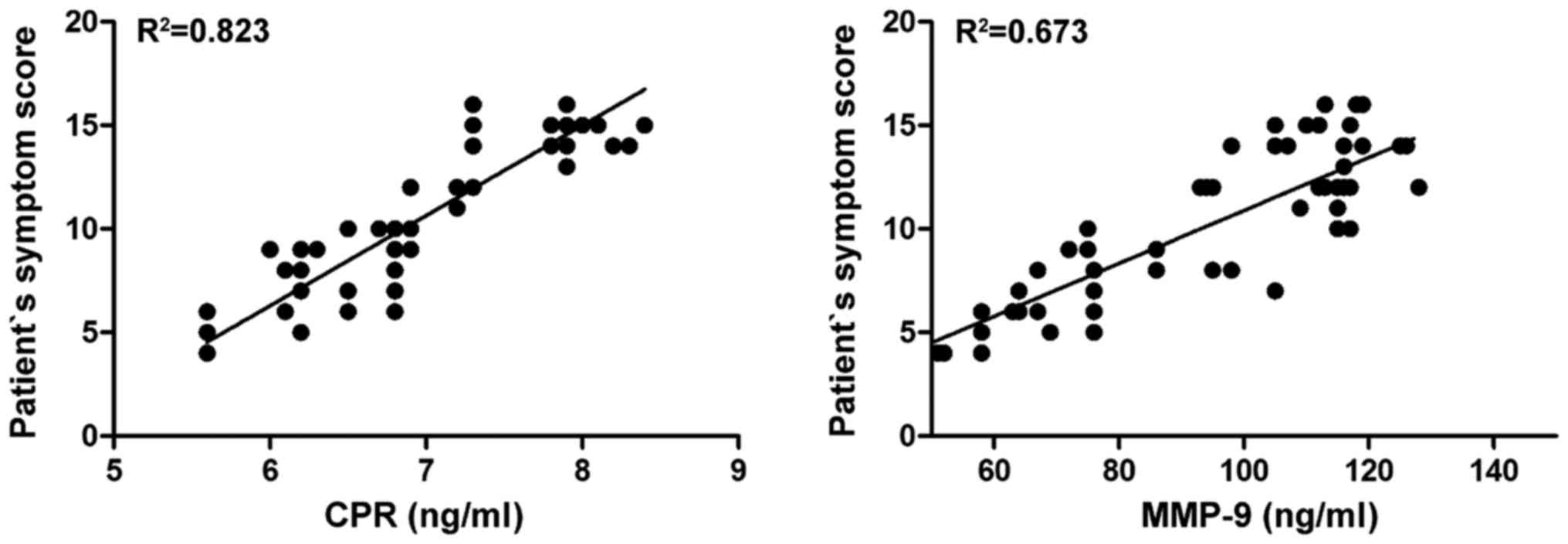|
1
|
ISIS-2 (Second International Study of
Infarct Survival) Collaborative Group: Randomised trial of
intravenous streptokinase, oral aspirin, both, or neither among
17,187 cases of suspected acute myocardial infarction: ISIS-2.
Lancet. 2:349–360. 1988.PubMed/NCBI
|
|
2
|
Weber AA, Przytulski B, Schanz A, Hohlfeld
T and Schrör K: Towards a definition of aspirin resistance: A
typological approach. Platelets. 13:37–40. 2002. View Article : Google Scholar : PubMed/NCBI
|
|
3
|
Ji AL, Chen WW and Huang WJ: Clinical
study on influences of enteric coated aspirin on blood pressure and
blood pressure variability. Eur Rev Med Pharmacol Sci.
20:5017–5020. 2016.PubMed/NCBI
|
|
4
|
Olszanecka A, Olszanecki R, Korbut R and
Kawecka-Jaszcz K: Aspirin resistance - pharmacological mechanisms
and clinical implications. Kardiol Pol. 62:87–92. 2005.(In Polish).
PubMed/NCBI
|
|
5
|
Eichhorn J, Sima D, Lindschau C, Turowski
A, Schmidt H, Schneider W, Haller H and Luft FC: Antiendothelial
cell antibodies in thromboangiitis obliterans. Am J Med Sci.
315:17–23. 1998. View Article : Google Scholar : PubMed/NCBI
|
|
6
|
ATS Committee on Proficiency Standards for
Clinical Pulmonary Function Laboratories, . ATS statement:
Guidelines for the six-minute walk test. Am J Respir Crit Care Med.
166:111–117. 2002. View Article : Google Scholar : PubMed/NCBI
|
|
7
|
Wan J, Yang Y, Ma ZH, Sun Y, Liu YQ, Li GJ
and Zhang GM: Autologous peripheral blood stem cell transplantation
to treat thromboangiitis obliterans: Preliminary results. Eur Rev
Med Pharmacol Sci. 20:509–513. 2016.PubMed/NCBI
|
|
8
|
Kobayashi M, Ito M, Nakagawa A, Nishikimi
N and Nimura Y: Immunohistochemical analysis of arterial wall
cellular infiltration in Buerger's disease (endarteritis
obliterans). J Vasc Surg. 29:451–458. 1999. View Article : Google Scholar : PubMed/NCBI
|
|
9
|
Kimura A, Kobayashi Y, Takahashi M,
Ohbuchi N, Kitamura H, Nakamura T, Satoh M, Sasaoka T, Hiroi S,
Arimura T, et al: MICA gene polymorphism in Takayasu's arteritis
and Buerger's disease. Int J Cardiol. 66 Suppl 1:S107–S113;
discussion S115. 1998. View Article : Google Scholar : PubMed/NCBI
|
|
10
|
Sadik NA, Mohamed WA and Ahmed MI: The
association of receptor of advanced glycated end products and
inflammatory mediators contributes to endothelial dysfunction in a
prospective study of acute kidney injury patients with sepsis. Mol
Cell Biochem. 359:73–81. 2012. View Article : Google Scholar : PubMed/NCBI
|
|
11
|
Laight DW, Carrier MJ and Anggård EE:
Endothelial cell dysfunction and the pathogenesis of diabetic
macroangiopathy. Diabetes Metab Res Rev. 15:274–282. 1999.
View Article : Google Scholar : PubMed/NCBI
|
|
12
|
O'Brien JR: Shear-induced platelet
aggregation. Lancet. 335:711–713. 1990. View Article : Google Scholar : PubMed/NCBI
|
|
13
|
Shikano M, Sobajima H, Yoshikawa H, Toba
T, Kushimoto H, Katsumata H, Tomita M and Kawashima S: Usefulness
of a highly sensitive urinary and serum IL-6 assay in patients with
diabetic nephropathy. Nephron. 85:81–85. 2000. View Article : Google Scholar : PubMed/NCBI
|
|
14
|
Avogaro A, Piarulli F, Valerio A, Miola M,
Calveri M, Pavan P, Vicini P, Cobelli C, Tiengo A, Calò L, et al:
Forearm nitric oxide balance, vascular relaxation, and glucose
metabolism in NIDDM patients. Diabetes. 46:1040–1046. 1997.
View Article : Google Scholar : PubMed/NCBI
|
|
15
|
Steinberg HO, Chaker H, Leaming R, Johnson
A, Brechtel G and Baron AD: Obesity/insulin resistance is
associated with endothelial dysfunction. Implications for the
syndrome of insulin resistance. J Clin Invest. 97:2601–2610. 1996.
View Article : Google Scholar : PubMed/NCBI
|
|
16
|
Shimoyama Y, Taki K, Mitsuda Y, Tsuruta Y,
Hamajima N and Niwa T: KLOTHO gene polymorphisms G-395A and C1818T
are associated with low-density lipoprotein cholesterol and uric
acid in Japanese hemodialysis patients. Am J Nephrol. 30:383–388.
2009. View Article : Google Scholar : PubMed/NCBI
|
|
17
|
Zheng AS, Churilov L, Colley RE, Goh C,
Davis SM and Yan B: Association of aspirin resistance with
increased stroke severity and infarct size. JAMA Neurol.
70:208–213. 2013. View Article : Google Scholar : PubMed/NCBI
|
|
18
|
Paez Espinosa EV, Murad JP and Khasawneh
FT: Aspirin: Pharmacology and clinical applications. Thrombosis.
2012:1731242012. View Article : Google Scholar : PubMed/NCBI
|
|
19
|
Rydzewski A, Urano T, Hachiya T, Kaneko H,
Baba S, Takada Y and Takada A: The effect of a 5HT2 receptor
antagonist sarpogrelate (MCI-9042) treatment on platelet function
in Buerger's disease. Thromb Res. 84:445–452. 1996. View Article : Google Scholar : PubMed/NCBI
|
|
20
|
Ishibashi H, Hayakawa N, Yamamoto H,
Nishikimi N, Yano T and Nimura Y: Thoracoscopic sympathectomy for
Buerger's disease: A report on the successful treatment of four
patients. Surg Today. 25:180–183. 1995. View Article : Google Scholar : PubMed/NCBI
|
















